Abstract
Local chemical gradients can have a significant impact on bacterial population distributions within subsurface environments by evoking chemotactic responses. These local gradients may be created by consumption of a slowly diffusing nutrient, generation of a local food source from cell lysis, or dissolution of nonaqueous phase liquids trapped within the interstices of a soil matrix. We used a random walk simulation algorithm to study the effect of a local microscopic gradient on the swimming behavior of bacteria in a porous medium. The model porous medium was constructed using molecular dynamics simulations applied to a fluid of equal-sized spheres. The chemoattractant gradient was approximated with spherical symmetry, and the parameters for the swimming behavior of soil bacterium Pseudomonas putida were based on literature values. Two different mechanisms for bacterial chemotaxis, one in which the bacteria responded to both positive and negative gradients, and the other in which they responded only to positive gradients, were compared. The results of the computer simulations showed that chemotaxis can increase migration through a porous medium in response to microscopic-scale gradients. The simulation results also suggested that a more significant role of chemotaxis may be to increase the residence time of the bacteria in the vicinity of an attractant source.
Full text
PDF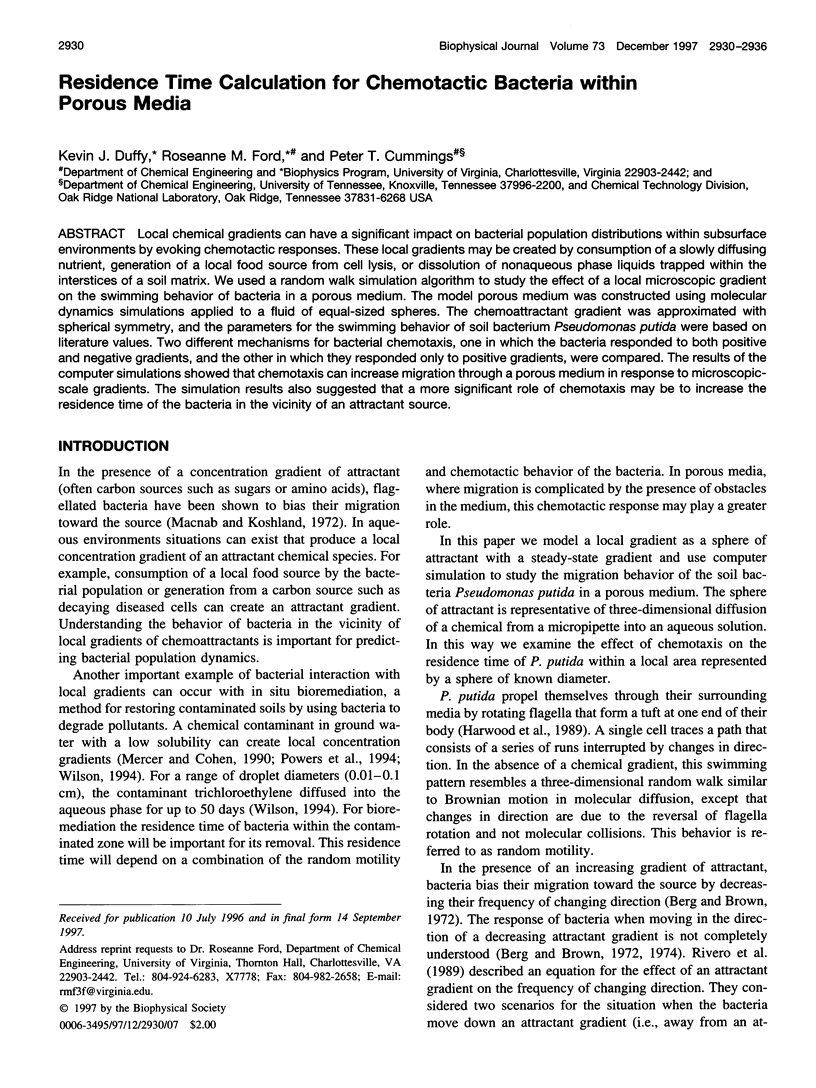
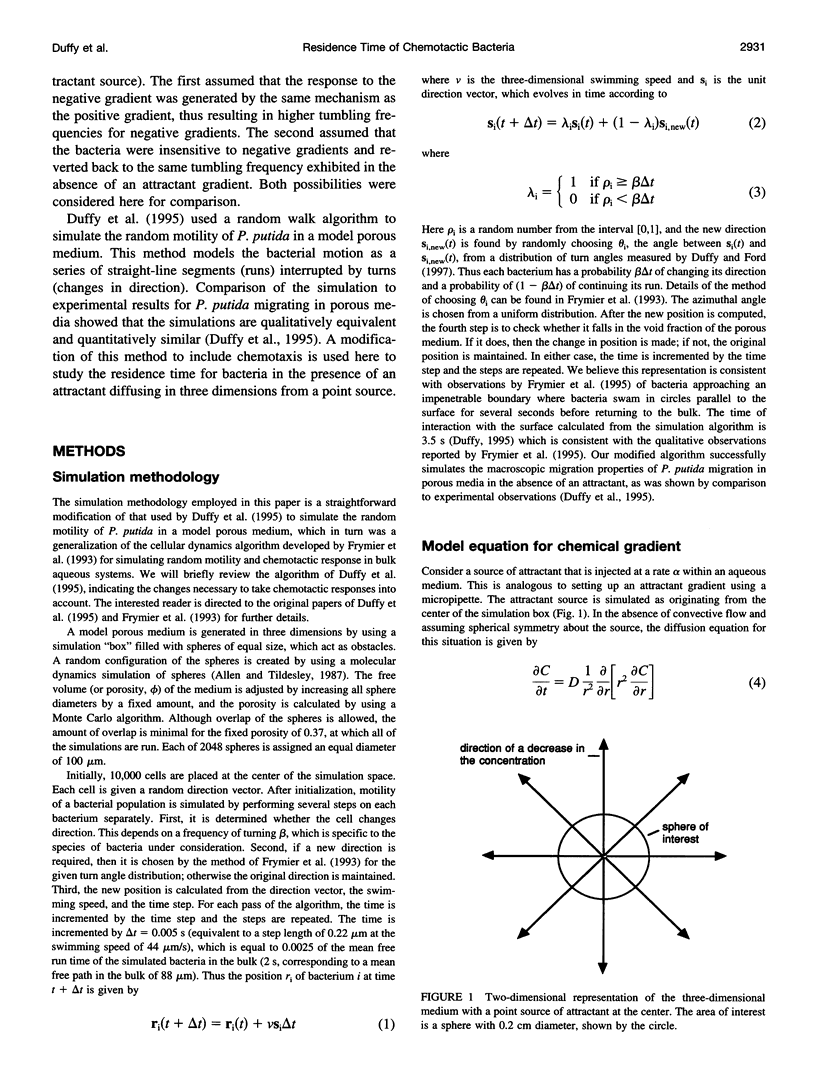
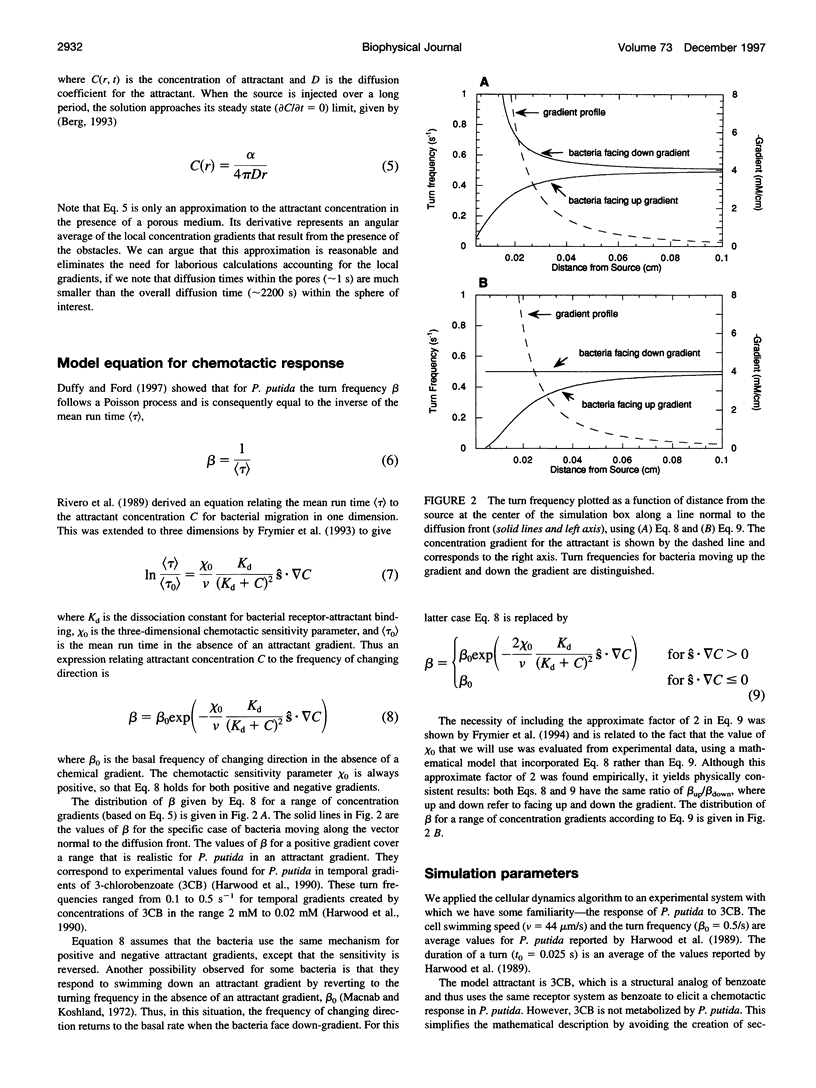
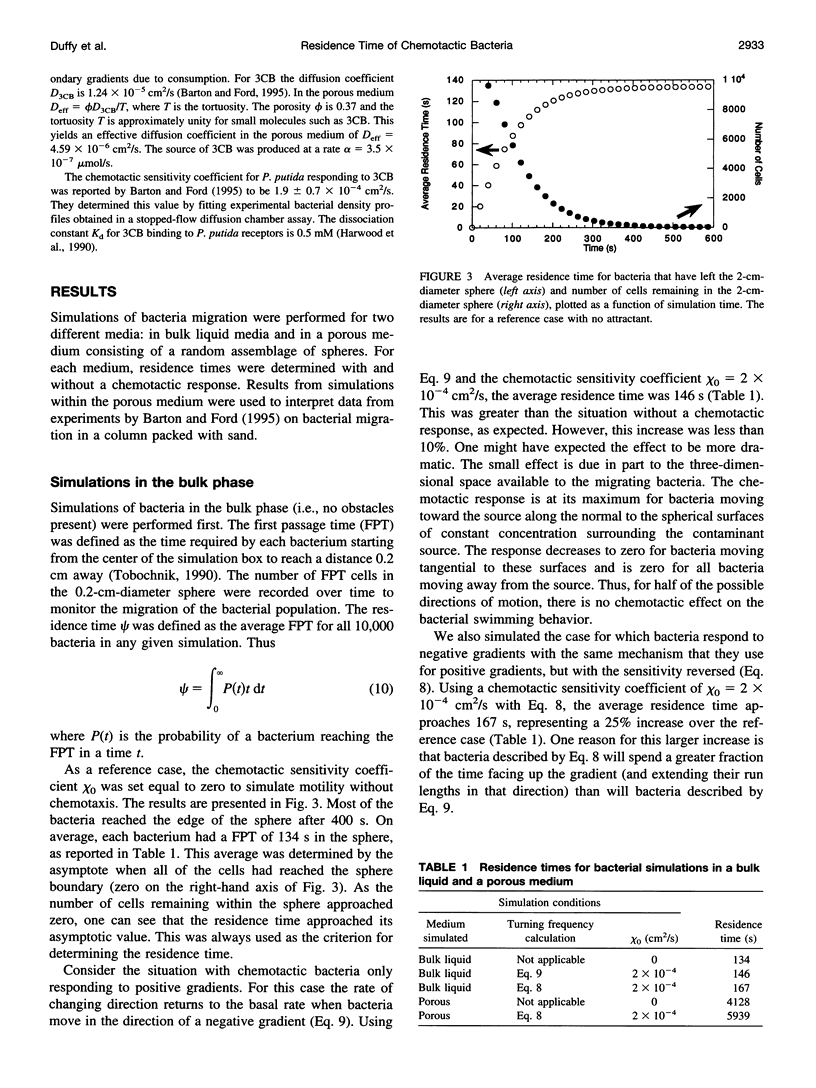
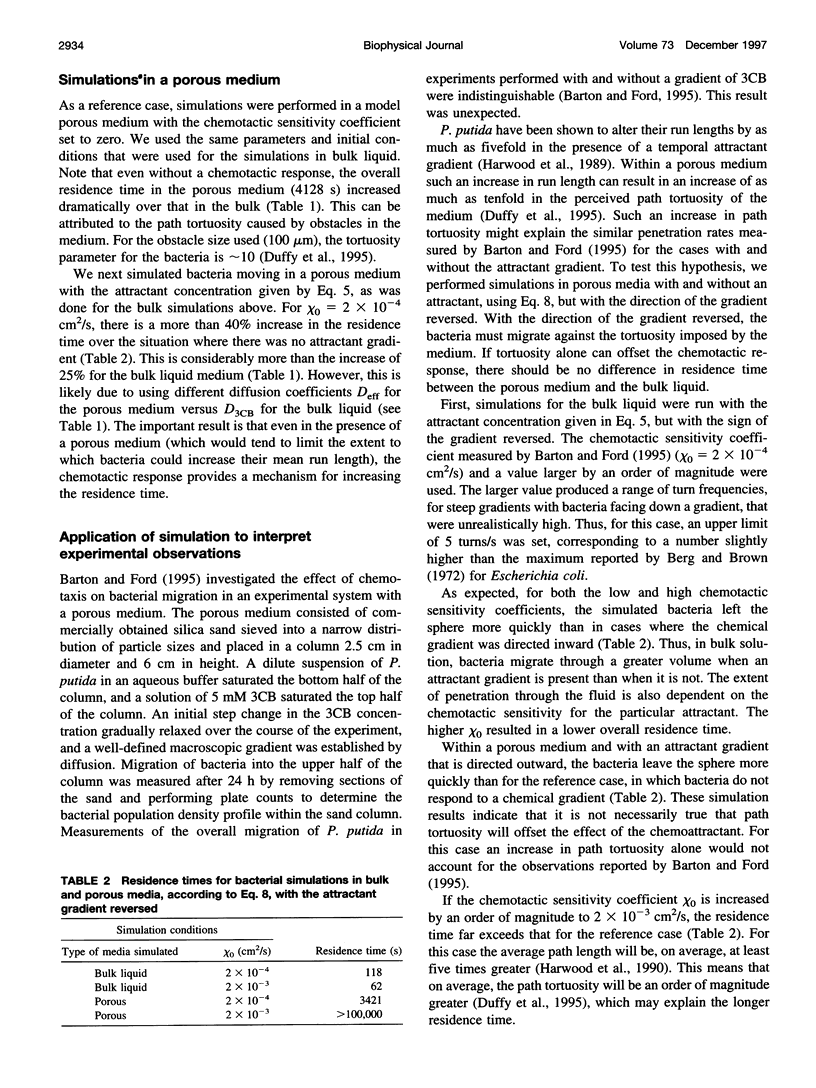
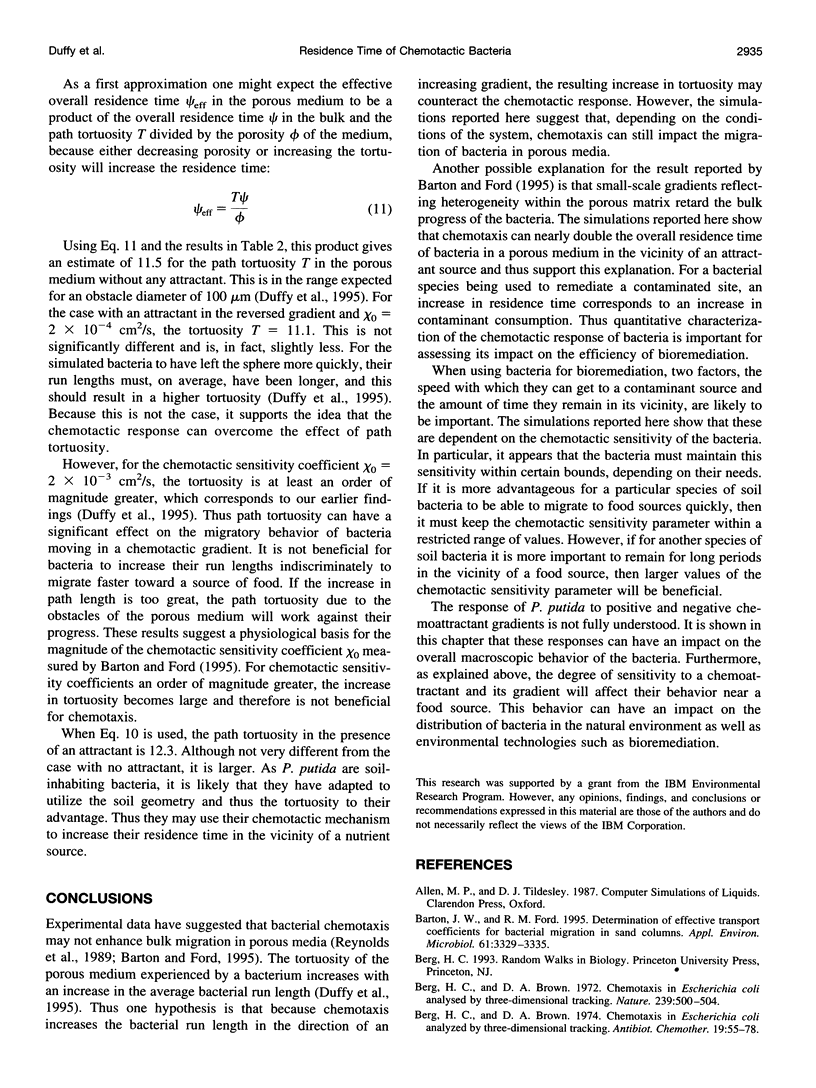
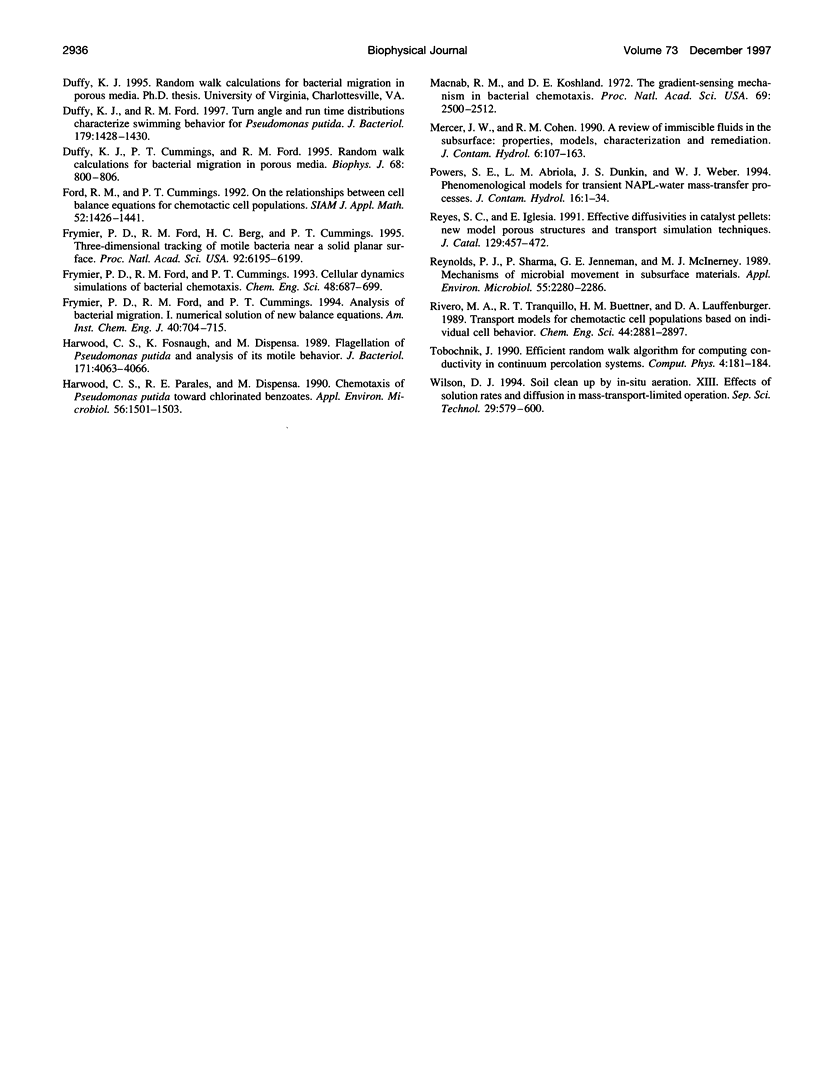
Selected References
These references are in PubMed. This may not be the complete list of references from this article.
- Barton J. W., Ford R. M. Determination of effective transport coefficients for bacterial migration in sand columns. Appl Environ Microbiol. 1995 Sep;61(9):3329–3335. doi: 10.1128/aem.61.9.3329-3335.1995. [DOI] [PMC free article] [PubMed] [Google Scholar]
- Berg H. C., Brown D. A. Chemotaxis in Escherichia coli analysed by three-dimensional tracking. Nature. 1972 Oct 27;239(5374):500–504. doi: 10.1038/239500a0. [DOI] [PubMed] [Google Scholar]
- Berg H. C., Brown D. A. Chemotaxis in Escherichia coli analyzed by three-dimensional tracking. Antibiot Chemother (1971) 1974;19:55–78. doi: 10.1159/000395424. [DOI] [PubMed] [Google Scholar]
- Duffy K. J., Cummings P. T., Ford R. M. Random walk calculations for bacterial migration in porous media. Biophys J. 1995 Mar;68(3):800–806. doi: 10.1016/S0006-3495(95)80256-0. [DOI] [PMC free article] [PubMed] [Google Scholar]
- Duffy K. J., Ford R. M. Turn angle and run time distributions characterize swimming behavior for Pseudomonas putida. J Bacteriol. 1997 Feb;179(4):1428–1430. doi: 10.1128/jb.179.4.1428-1430.1997. [DOI] [PMC free article] [PubMed] [Google Scholar]
- Frymier P. D., Ford R. M., Berg H. C., Cummings P. T. Three-dimensional tracking of motile bacteria near a solid planar surface. Proc Natl Acad Sci U S A. 1995 Jun 20;92(13):6195–6199. doi: 10.1073/pnas.92.13.6195. [DOI] [PMC free article] [PubMed] [Google Scholar]
- Harwood C. S., Fosnaugh K., Dispensa M. Flagellation of Pseudomonas putida and analysis of its motile behavior. J Bacteriol. 1989 Jul;171(7):4063–4066. doi: 10.1128/jb.171.7.4063-4066.1989. [DOI] [PMC free article] [PubMed] [Google Scholar]
- Harwood C. S., Parales R. E., Dispensa M. Chemotaxis of Pseudomonas putida toward chlorinated benzoates. Appl Environ Microbiol. 1990 May;56(5):1501–1503. doi: 10.1128/aem.56.5.1501-1503.1990. [DOI] [PMC free article] [PubMed] [Google Scholar]
- Macnab R. M., Koshland D. E., Jr The gradient-sensing mechanism in bacterial chemotaxis. Proc Natl Acad Sci U S A. 1972 Sep;69(9):2509–2512. doi: 10.1073/pnas.69.9.2509. [DOI] [PMC free article] [PubMed] [Google Scholar]
- Reynolds P. J., Sharma P., Jenneman G. E., McInerney M. J. Mechanisms of microbial movement in subsurface materials. Appl Environ Microbiol. 1989 Sep;55(9):2280–2286. doi: 10.1128/aem.55.9.2280-2286.1989. [DOI] [PMC free article] [PubMed] [Google Scholar]


